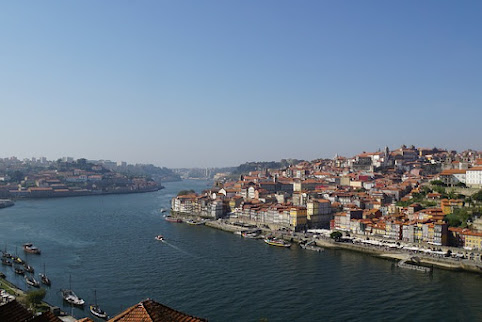
The city has more than 530,000 inhabitants and has the status of a district. Dresden forms the core of a metropolitan area of the same name, inhabited by over 750,000 inhabitants. It is the economically strongest region in eastern Germany, which was formerly controlled by the Soviets
Dresden is a city with beautiful monuments, and is full of museums and galleries. It is a interesting place for any visitors in the region, as well as for many Germans who come to the city in great numbers. The city became one of the more sorrowful symbols of WWII. Over half of this charming city was levelled and close to 25,000 people were killed. However, Dresden has literally risen from the ashes and now belongs to one of the top cities in all of Central Europe.
Dresden lies on the Elbe River between the eastern outcrops of the Ore Mountains, the Lusatian Mountains and the Elbe Sandstones. The nearest major cities are Chemnitz, Leipzig and Berlin. Wroclaw, Poland is located 230 kilometers in the east. Prague, Czech Republic is 146 kilometers down south. In the neighborhood of the city is the district of Bautzen, known for its rich natural heritage as the “Saxon Switzerland“. Another historically important city that, due to urban growth, is practically considered as Dresden’s outskirts, is Meissen, birthplace of one of Europe’s most demanded porcelians.
The first documented settlement in the area dates back to the 5th century BC. High afforestation rates meant that it would not become a larger settlement until the early Middle Ages. To the east of the Elbe were the Slavs, who gradually expanded and were Germanized.
The first written mention of Dresden was in 1206. It is found in a document describing a trial in which the term "Dresdene" appears. The name is probably derived from the Slavic designation "Drežďany" meaning “people from forests and swamps“, who were inhabitants of the territory.
By 1216 Dresden was first mentioned as a city, but the Charter giving municipal law to Dresden was not yet found. Dresden was an insignificant town until the 15th century. The situation changed after 1485, when the city became a residence of the Saxon Dukes. Later, its importance grew as Saxony was declared a kingdom. During the Reformation in the early 16th century, Dresden became the capital of the most important Protestant country in Holy Roman Empire.
During the Thirty Years' War in the first half of the 17th century, the city was not damaged nor affected by looting. The population suffered more from hunger and plague. There were many turnovers in the War. Saxony was drawn into most of the conflicts in Central Europe, which had, of course, negative effects on the region. On the other hand, a number of gorgeous buildings were built at that time.
In 1685, Dreseden was completely burnt down. The rebuilding of the Baroque city was completed in 1732, when the Saxon city was often referred to as the "New Royal City." During the reign of Augustus II, Dresden became a cultural metropolis, which it has remained until today.
During the Napoleonic wars, Saxony fought on the side of France. Several battles took place around the city. The most important was the Battle of Dresden in 1813, which was one of the last battles Napoleon had won. This battle was preceded by a decisive battle at Leipzig of the same year, in which Napoleon suffered a crushing defeat.
From then on, Dresden remained a quiet, peaceful, yet prosperous German city until the First World War. After Germany‘s loss and the eventual dissolution of the monarchy, Dresden became the capital of the Free State of Saxony. Saxony was “liberated“ from the monarchs, hence the title of Free State. In 1919, the Dresden Art Nouveau group was founded here, whose most famous member was Otto Dix.
The Perserverance of the Jews in Dresden
The Dresden Jews suffered heavily under the dictatorship of Adolf Hitler between 1933 and 1945. Five thousand members of the local Jewish community were gradually expelled and the rest of them were later transported to the concentration and extermination camps. After the war, only 41 Jews lived in the city.The Old Synagogue of Dresden, designed by architect Semper and one of the iconic synagogues in Germany, was destroyed during the Kristallnacht in 1938. Many of Dresden's other monuments were almost entirely bombed by the Allies between 1944 and 1945. Despite this, several architectural gems survived, and others were repaired or even rebuilt after the war. They were replaced by exact copies, like the Zwinger Art Gallery for instance.
Dresden became part of the Eastern Democratic Republic of Germany that fell behind the iron curtain after the Second World War. Only the fall of the Berlin Wall in 1989 and the reunification of Germany brought back freedom and prosperity to the city. Since the 1990s, a planned governmental relocation of Jewish refugees from Soviet Union took place. Today, the local Jewish community is now one of the most active in the country, numbering over a thousand members. A new Synagogue was opened in 2001 on the exact place where the old one stood.
Nowadays, the city is for its refreshing atmosphere, cultural life, many sightseeing opportunities, as well as for its once again thriving Jewish life. This is definitely a place that should not be missed by anyone passing through Prague and Berlin! And for Jews who want to learn more about their heritage in Europe, Dresden is a city that you should absolutely take a kosher tour around.






















